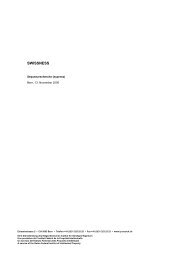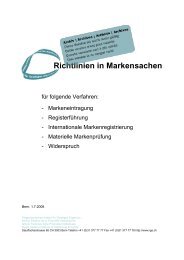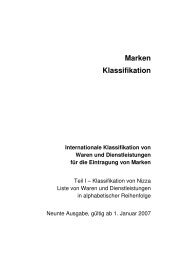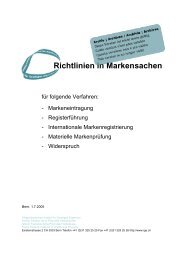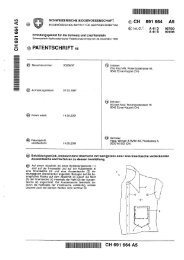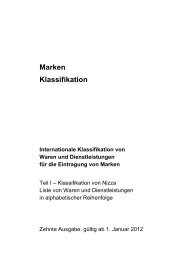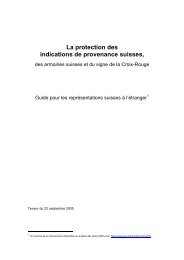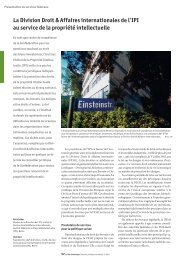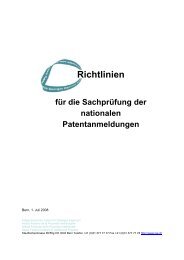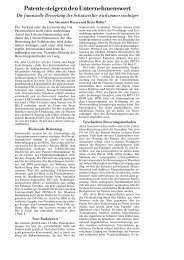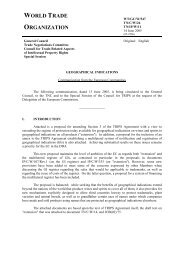AVIS DE DROIT PROTECTION DES SIGNES NATIONAUX
AVIS DE DROIT PROTECTION DES SIGNES NATIONAUX
AVIS DE DROIT PROTECTION DES SIGNES NATIONAUX
You also want an ePaper? Increase the reach of your titles
YUMPU automatically turns print PDFs into web optimized ePapers that Google loves.
ETATS-UNIS<br />
Example: A company promotes its product in an ad that features a manager describing the<br />
"true American quality" of the work produced at the company’s American factory. Although<br />
there is no express representation that the company’s product is made in the U.S., the overall<br />
— or net — impression the ad is likely to convey to consumers is that the product is of U.S.<br />
origin.<br />
The Standard For Unqualified Made In USA Claims<br />
For a product to be called Made in USA, or claimed to be of domestic origin without<br />
qualifications or limits on the claim, the product must be "all or virtually all" made in<br />
the U.S. The term "United States," as referred to in the Enforcement Policy Statement,<br />
includes the 50 states, the District of Columbia, and the U.S. territories and possessions.<br />
"All or virtually all" means that all significant parts and processing that go into the product<br />
must be of U.S. origin. That is, the product should contain no — or negligible — foreign<br />
content.<br />
When a manufacturer or marketer makes an unqualified claim that a product is Made in USA,<br />
it should have — and rely on — a "reasonable basis" to support the claim at the time it is<br />
made. This means a manufacturer or marketer needs competent and reliable evidence to<br />
back up the claim that its product is "all or virtually all" made in the U.S.<br />
The product’s final assembly or processing must take place in the U.S. The Commission<br />
then considers other factors, including how much of the product’s total manufacturing<br />
costs can be assigned to U.S. parts and processing, and how far removed any foreign<br />
content is from the finished product. In some instances, only a small portion of the total<br />
manufacturing costs are attributable to foreign processing, but that processing<br />
represents a significant amount of the product’s overall processing. The same could be<br />
true for some foreign parts. In these cases, the foreign content (processing or parts) is<br />
more than negligible, and, as a result, unqualified claims are inappropriate.<br />
Example: A company produces propane barbecue grills at a plant in Nevada. The product’s<br />
major components include the gas valve, burner and aluminum housing, each of which is<br />
made in the U.S. The grill’s knobs and tubing are imported from Mexico. An unqualified<br />
Made in USA claim is not likely to be deceptive because the knobs and tubing make up a<br />
negligible portion of the product’s total manufacturing costs and are insignificant parts of the<br />
final product. 402<br />
Example: A table lamp is assembled in the U.S. from American-made brass, an Americanmade<br />
Tiffany-style lampshade, and an imported base. The base accounts for a small percent<br />
of the total cost of making the lamp. An unqualified Made in USA claim is deceptive for two<br />
reasons: The base is not far enough removed in the manufacturing process from the finished<br />
product to be of little consequence and it is a significant part of the final product.<br />
402<br />
This example, as well as all of the following examples, can be found on the FTC’s “Complying with<br />
Made in USA Standard” website available at:<br />
http://www.ftc.gov/bcp/conline/pubs/buspubs/madeusa.htm.<br />
219



